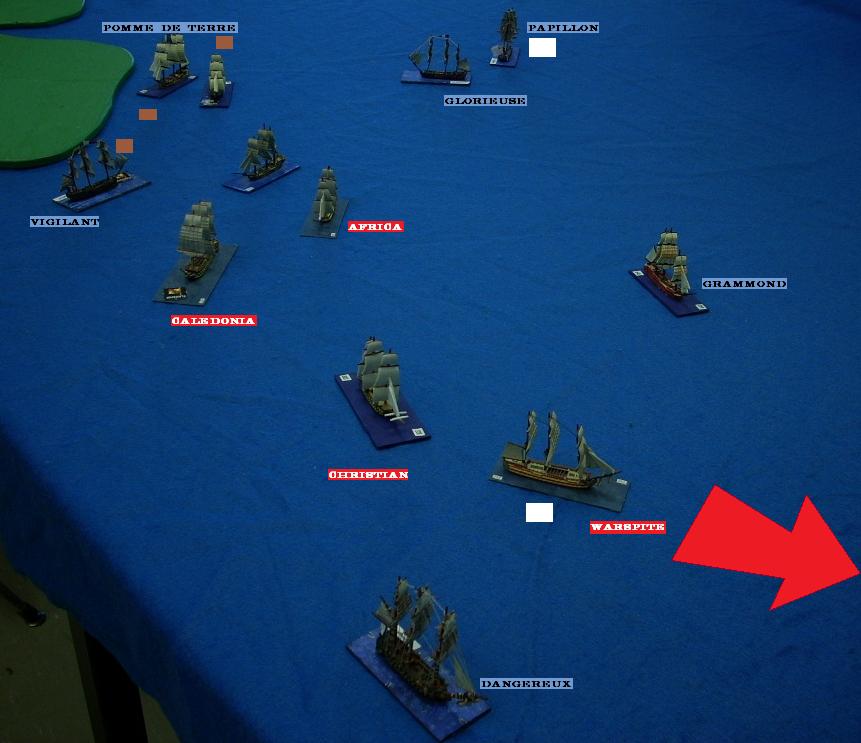
THE BATTLE OF CATELA BAY
Aug 6 1809
General Jourdan's naval expedition had encountered a British squadron in the Western Mediterranean and when the admiral peeled off from the fleet to engage it, the fleet continued on toward Gibraltar. The French Admiral's squadron would be dispersed but it would allow the remainder of the fleet to reach Catela Bay, below Gibraltar, on Aug 5th.
The small armada consisted of three squadrons of transports carrying 55,000 soldiers and two patrol squadrons as remaining escorts. With the tide, the British battle squadron stationed at Catela Bay sailed out to engage the French. They would meet the two French patrol squadrons.
Even while this battle was taking place, the French infantry and artillery were already being disembarked. Massive siege guns were unloaded as quickly as they could be. The French patrol squadrons approached the British in two columns with a plan to have both wings endeavour to stay at long range and shoot at British sails and rigging.
Fully half the French ships were crewed by inexperienced and generally poor sailors who were disinclined to get too near to the enemy.
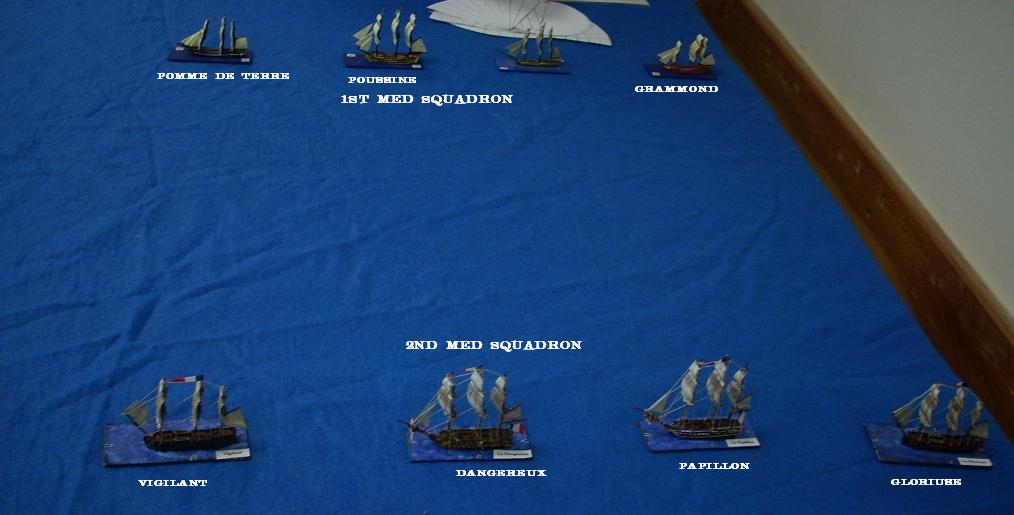
Initially, the wind was with the British forces. The pride of their squadron was Caledonia with 120 guns but Warspite too was a heavily armed vessel. All of the British vessels were crewed by elite sailors except the Africa.
The Bay approaches were protected by two Martello towers with modest guns but the massive artilly of Gibraltar Fortress could also make their presence felt if the enemy got too close.
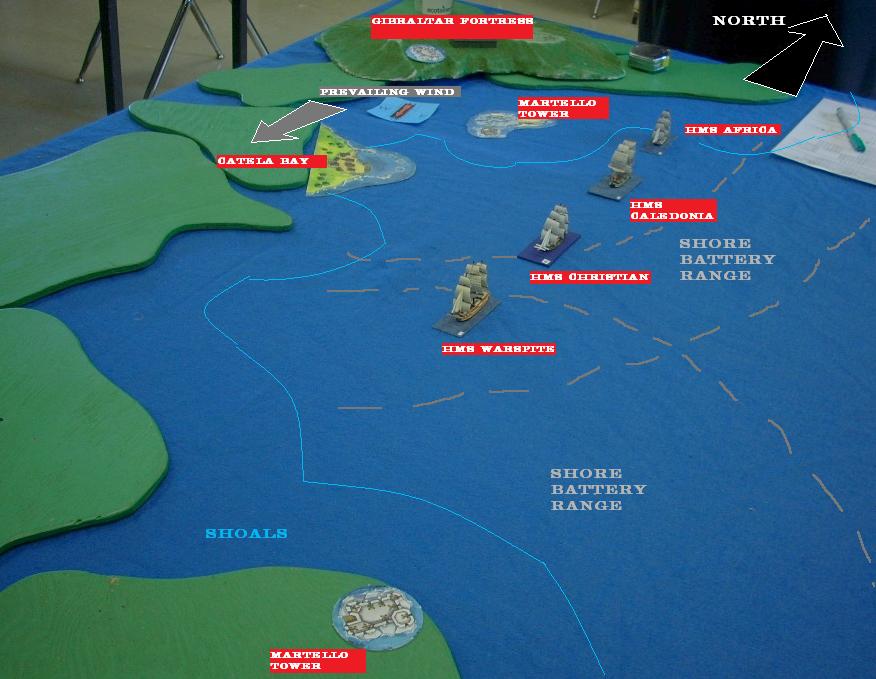
The British plan was to move directly against the Second Mediterranean Squadron to engage it as aggressively as possible. British seamanship would allow them to maintain formation while the French line was instantly thrown into disarray. The Captains of the Vigilant and Dangereux had a notion to cut across the British line and then move down the shoreline. The wind began to blow a few points more to the west.

The 1st Med Squadron is dutifully remaining at long range but the Second cannot avoid coming to close grips with the enemy squadron. Initial volleys are effective and French confidence builds. The Dangereux determines that there is no room to starboard and turns to port.
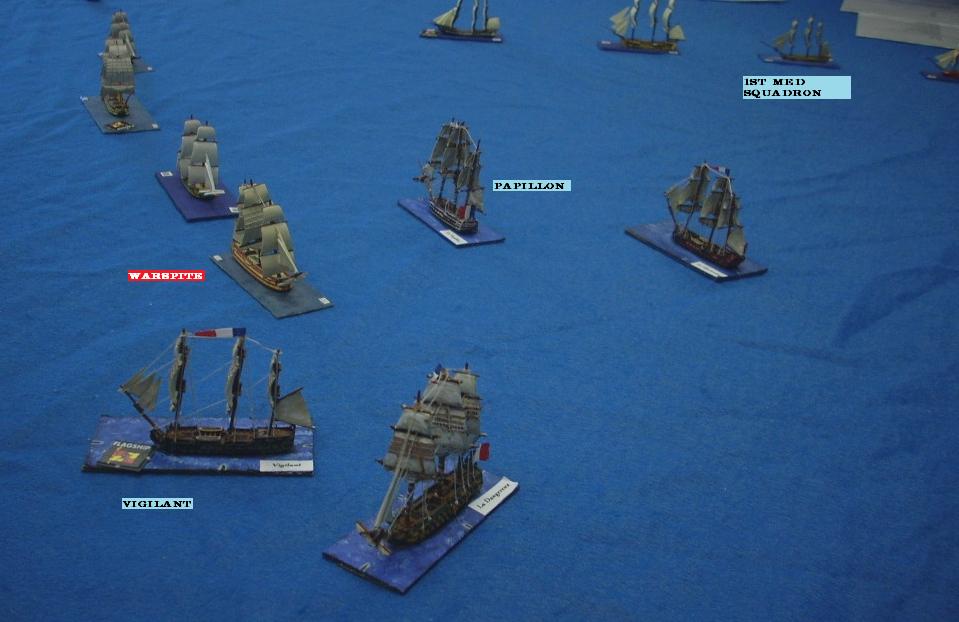
The disciplined and cohesive British line has managed to do considerable damage to the Papillon, setting it afire and ruining its gun decks. Vigilant too is taking a pounding but more alarming, they find themselves too close to shore and without enough room to turn away.

Papillon strikes her colours and runs. Vigilant runs aground hard where she will suffer at the hands of British gunners. In the foreground, Warspite and Dangereux sail alongside one another and exchange violent volleys. The French ship would suffer steering damage but thankfully had little cause to turn. In the distance, the First Med Squadron is completing its wide circuit and prepares to get its first tentative shots in.
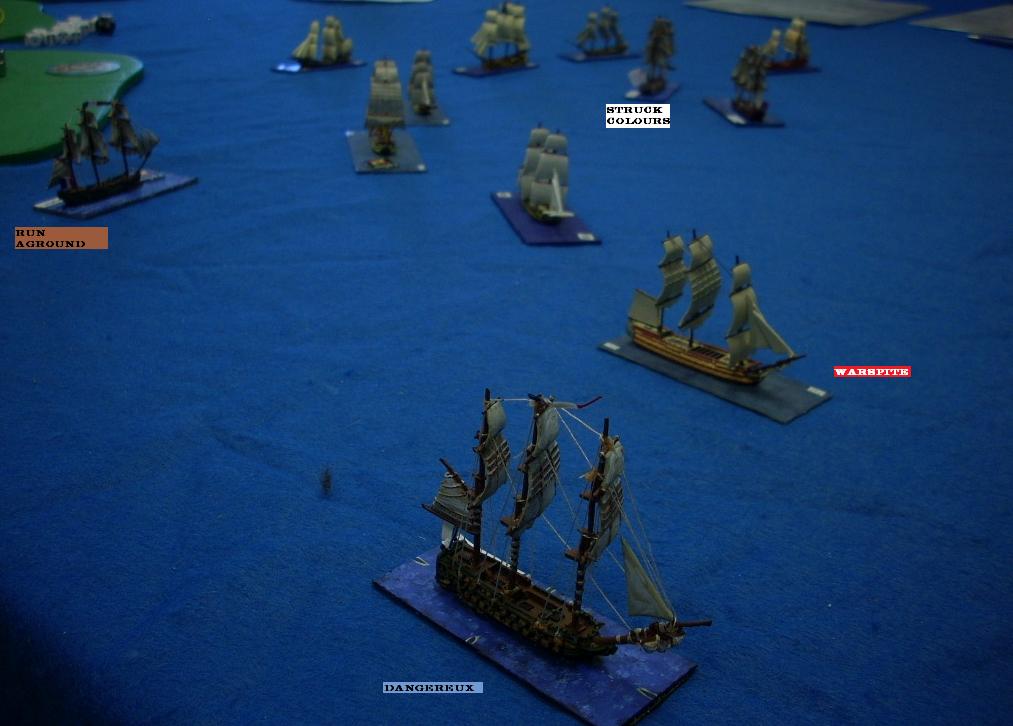
The flagship of the First Squadron joins the flagship of the second and runs itself aground. The line behind it can hardly find a means to avoid the same fate. Meanwhile, the fleeing Papillion, perhaps distracted while extinguishing the fires, and the manoeuvring Glorieuse leave Grammond with no room to turn and a collision is only narrowly avoided.
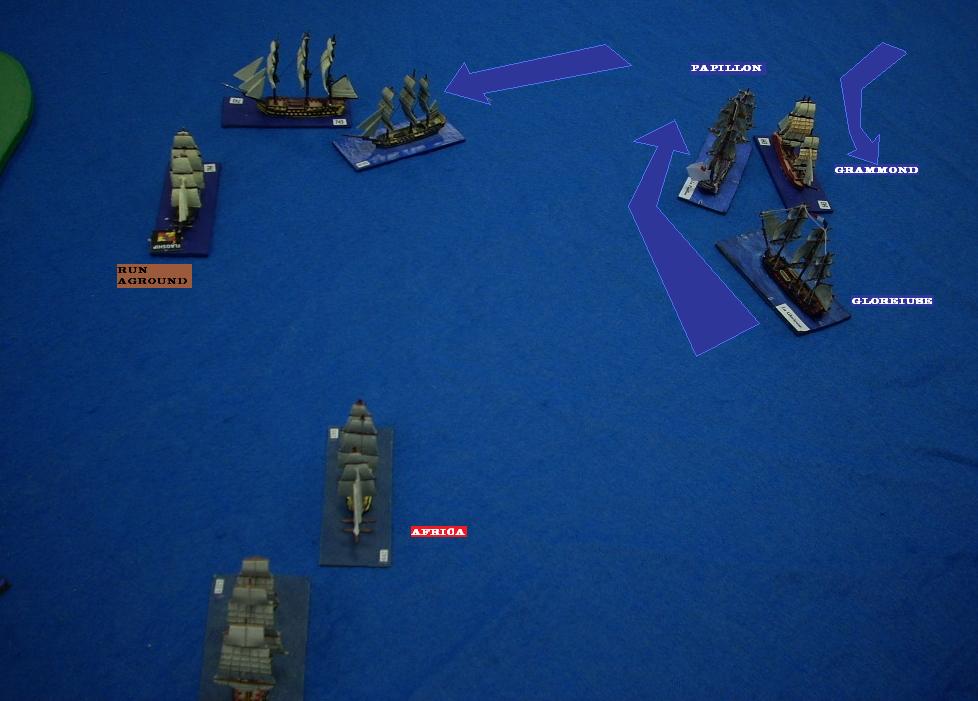
The persistent damage to Warspite finally breaks the spirit of her captain. She strikes her colours and run for open sea. Three French vessels are run aground but ships boats have been dropped and, under the steady fire from the shore batteries, the vessels work to pull themselves free.

As the battle draws to an end, the British Commodore orders his squadron to make for the Western Mediterranean. They could swing back around to engage the remaining vessels of First Squadron but by the time they got around, the ships would be rescued from the shoals. The First Mediterranean Squadron remains at Catela Bay to watch over the disembarking transports but the First squadron is too badly damaged to be effective and the remaining seaworthy ships are dispersed among the flotilla.
It is technically a French victory but it may prove costly with the British battle squadron still in the area. It is also a bit of an embarrassment and Spanish cartographers are accused.
